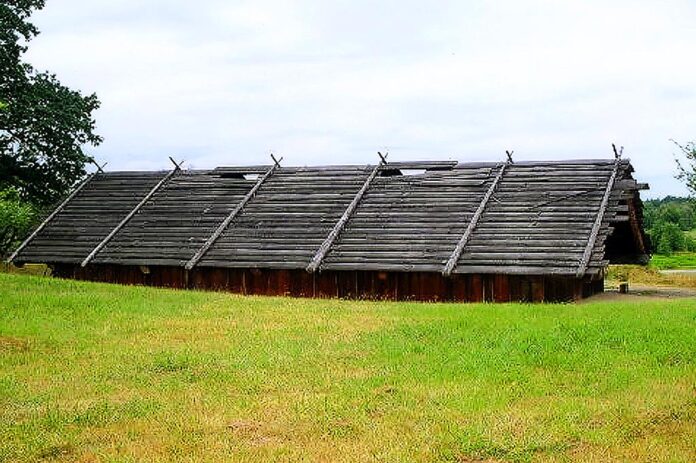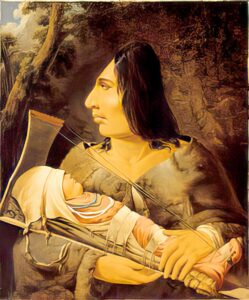Early pioneers who came across the Oregon Trail to settle in the Oregon Country in the 1850s met local indigenous Native Americans in what would become the Tigard-Tualatin region. These Native Americans were known as the Atfalati Kalapuya and they had a highly developed culture and way of life. These indigenous peoples gathered berries and natural bulrushes for making tule mats which they used inside their summer mobile tepees or permanent winter cedar plank houses. They cultivated wapato (a potato-like tuber) and fished for salmon in the Columbia River. They traded dried fish and handmade tools and crafts along the Columbia River and throughout the Willamette Valley. The Tigard-Tualatin Atfalati Kalapuyas traveled to trade with a large Chinook Indian village called Cathlapotle on the Columbia which today is a recreated Indian Village in the Ridgefield Washington National Wildlife Refuge. Chinook refers to their language group as Chinook was used as their trading language or jargon.
You can visit this historic site of Cathlapotle, go inside the reconstructed cedar plank house, and see all the artifacts used by the Chinook such as canoe paddles, basic tools made of flint and bone, beautifully woven baskets, blankets, and clothing made years ago. The inside of the plank house focuses on a large central fire pit for cooking, for warmth, and the sleeping areas are arranged on raised platforms along the inner sides of the longhouse and covered in animal skins and fur robes. There are vents in the roof to let out the smoke. The chief’s part of the longhouse is set apart in the back and was separated by curtains of animal pelts or tule mats for privacy. A typical cedar plank house accommodated an extended family of fourteen to twenty. The Kalapuya Indians of Tigard-Tualatin lived in cedar plank longhouses for the winter and used tepees during the summer in their migrations hunting game or attending councils.
The original Cathlapotle settlement consisted of 14 cedar plank longhouses when Lewis and Clark came through on November 5th, 1805 on their way down the Columbia to winter in Astoria. Seven friendly canoes laded with trade goods came out into the river from Cathlapotle to welcome the Corps of Discovery crew. This historic Indian site is free and open to the public during the summer and is well worth the trip. You can take a picnic lunch and sit on the grass outside the longhouse. When you are ready to go inside remember to duck your head down to go through the small round entry hole used as a door. In the winter skins would have been placed over the door to block out the cold. You are permitted to take pictures inside and there is always a friendly guide to give you a knowledgeable tour.
The Atfalati Kalapuya burned the underbrush to fertilize their fields for planting crops and to flush out game during the hunt. They traveled long distances to trade for obsidian to make flake tools or to attend ceremonies such as weddings, trade fairs, or funerals. They lived along the rivers for fresh water and harvested the bulrushes for their mats and clothing. Their decorative colors were red and black which signified life and death. Kinship was traced through the male line but women were highly respected and accorded high status within their extended communities.
The symbol of being born free or enjoying free status was the flat head among the Columbia River and Willamette Valley Indians. This flat head was achieved by means of the infant cradleboard which flattened the baby’s head when strings were continuously tightened to compress a leather flap over the baby’s skull. Artist Paul Kane (1810-1871) painted a Flathead woman and her child illustrating the use of the cradleboard. In 1855 the U.S. government concluded a treaty with the Kalapuya of the Willamette Valley region and the tribes were moved to Grand Ronde Reservation in 1856 which remains today.

Soon new migrants poured into the Willamette Valley and new settlements demanded schools, churches, and town sites. Most settlers had come to give their children a better life and to find new opportunities. A new chapter of life on the frontier was beginning.
Images of America: Tigard
Dr. Barbara Bennett Peterson’s book can be found locally at Costco, Rite Aid, and the Tigard History Association’s John Tigard House Museum and online at Amazon.com tinyurl.com/2p8pz76e.


























